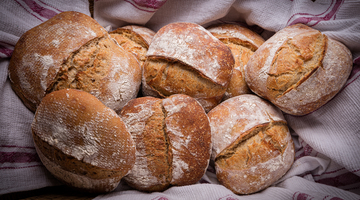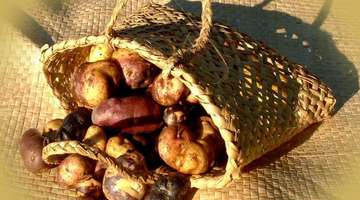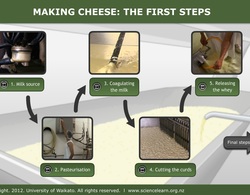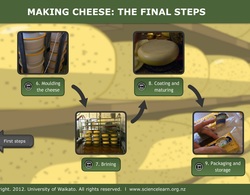

We all eat food because it provides the fundamental types of materials required to keep our bodies functioning. These materials can be categorised as: macronutrients – carbohydrates, proteins ...
READ MORE

A number of scientific studies have shown that high consumption of fruits and vegetables correlates with good health and lower incidence of diseases like cancer and cardiovascular disease It has ...
READ MORE

Carbohydrates are compounds of tremendous biological importance since they: provide energy through oxidation supply carbon for the synthesis of cell components serve as a form of stored chemical ...
READ MORE

In this activity, students listen to AgResearch’s Dr Matthew Barnett, the singing scientist, performing his latest YouTube release called I love fibre. Students then answer sets of questions and ...
READ MORE

In this activity students identify and analyse the information found on existing food labels. Purpose Students are asked to identify and analyse the information found on existing food labels to ...
READ MORE

Honey is antibacterial and can prevent growth of most types of bacteria. This experiment compares the effect of different types of honey on bacteria growing on agar plates. Purpose To compare the ...
READ MORE

Be part of a worldwide movement and use Global Earth Challenge to submit or classify photos to help our planet’s environment and human health. Global Earth Challenge is a citizen science campaign ...
READ MORE

Capture wild microbes and turn them into bread – for science! This is a project you could do with your students in the classroom or they can do at home. Microbes are found in every environment on ...
READ MORE

Alzheimer’s disease is an irreversible, progressive brain disorder that slowly destroys memory and thinking skills and eventually even the ability to carry out the simplest tasks. In this online ...
READ MORE

Students develop knowledge of new technology that enables fish oil to be added to food without a fishy taste or smell and design an advertisement to promote an omega-3 enriched food. Purpose To ...
READ MORE

This unit plan guides students to design a working model of part of the human digestive system that can be built in the classroom. Purpose Design a model of the mechanical, chemical and ...
READ MORE

Students develop knowledge of prototype taewa products and design a label that reflects the cultural value and specified market for the product. Purpose Understand the attributes and benefits of ...
READ MORE
The nutrigenomics research is being carried out by researchers from the University of Auckland and government-funded research institutes (Crown Research Institutes, or CRIs): Plant & Food ...
READ MORE
Dr John Ingram is a senior research scientist with Plant & Food Research, Auckland. The key goals for the project are the development of foods and food ingredients with optimised levels of ...
READ MORE
What characteristics do people use to tell whether something is fresh? Why is this important when you are making new foods?
READ MORE

The purpose of this interactive is to show visually how glucose molecules can be assembled to form simple sugars and large macromolecular carbohydrates such as starch and cellulose. To use this ...
READ MORE

This interactive explains the first steps in the process of making traditional Gouda cheese.Click on the labels to watch the videos and for more information. Find out more about the final steps ...
READ MORE

This interactive explains the final processes involved in making traditional Gouda cheese. Click on the labels for more information. Find out more about the initial steps in the cheese making ...
READ MORE